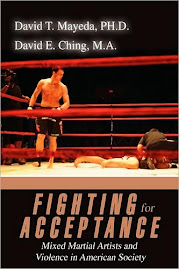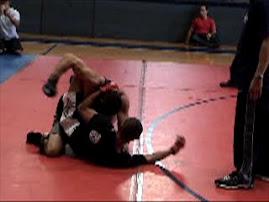 A thought provoking post about masculinity and its harmful affects on society over at The Global Sociology Blog got me thinking about how much masculinity is a performance, and further, how that performance is more important than the real life consequences that manifest from masculine trends.
A thought provoking post about masculinity and its harmful affects on society over at The Global Sociology Blog got me thinking about how much masculinity is a performance, and further, how that performance is more important than the real life consequences that manifest from masculine trends.IRIN also has a sobering story that speaks to this issue, focusing on the risky sexual behaviors of men in Brazil, titled "Real men don't cry - or do they?" As is common across cultures world-wide, men expect one another to engage in varied risky behaviors of one upsmanship. The competitive and comparative male bonding can involve different types of physical violence, economic posturing, hyper sexuality, and among other forms of showmanship, fronts of independence.
These components of hegemonic masculinity are especially harmful to society because they tend to be entrenched in competition (not surprising since capitalism is competitive). The desire to be the top dog, alpha male, CEO, or however one wants to label masculine success, means stepping on someone else (male and/or female) to achieve that status. As expressed in the IRIN story, the adverse affects of masculinity are harming not only men themselves, but also those around them:
Men don't cry. Men take risks. Men don't ask for help. Men are strong. Men have many sexual partners. These stereotypes of masculinity are contributing to the spread of HIV throughout the world, experts warned at a recent symposium on men and boys.
"Among other things, these stereotypes affect access to health care, the expression of one's sexuality, access to sexual and reproductive health services, and vulnerability to HIV,” said Purmina Mane, the adjunct executive director of the UN Population Fund (UNFPA) at the First Global Symposium Engaging Men and Boys in Achieving Gender Equality, held recently in Rio de Janeiro, Brazil.
[...]
Women talked about pregnancy, family planning, breast cancer and menopause, but never about sexual pleasure; men discussed sexual performance, sexual dysfunctions and sperm counts, but never contraceptive methods.
When this lack of knowledge is compounded by another macho stereotype – that seeking help is a sign of weakness – men’s health is at far higher risk.
In the case of HIV, men are known to use counselling and voluntary testing services much less frequently than women, and men also tend to begin antiretroviral treatment later.
"Late diagnosis and treatment means that many continue to practice unprotected sex, running the risk of reinfection and of unknowingly infecting their partners," said Mane.
These stereotypes also have consequences for women. Dumisani Rebombo, a technical counsellor in South Africa to the international reproductive health organization, EngenderHealth, recalled a patient he had counselled after a positive diagnosis.
"I asked him what his next steps would be, and asked him to bring his wife to the support group. He said he wasn’t going to reveal his status to his wife, nor was he going to use a condom, because he was a man and he’d find a way to deal with it."
The notion of a man’s strength and invincibility was one of the main risk factors for HIV infection, he commented.
Speaking from experience, I can say the years of socialization that boys and men go through in learning how to be "real" men are extremely difficult to break. The learning institutions - families, schools, sports teams, peers, media - are incredibly influential, and in turn, stimulating change is equally difficult.
I've come to believe that trying to make change on a broad level after males have reached high school is impractical. This is not to say such efforts should not take place, but they should be bolstering what's already been systemically taught. For too many adolescent males, it is already too late to turn around their perceptions of appropriate masculinity.
Teachers, coaches, family, and older youth (male and female) need to begin teaching boys from a much younger age that qualities such as inter-dependence, help seeking, and compassion are positive. Until larger generations of young men grow up learning that these qualities are positive (not necessarily masculine or feminine), the only way our society will cope with violence, poverty, and health disparities is through negligence, competitive capitalism, and more violence.
(Photo courtesy of IRIN)














